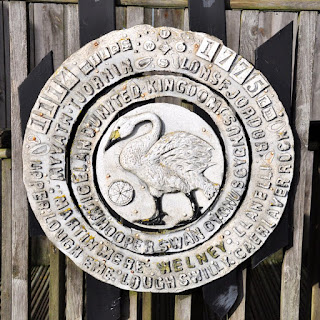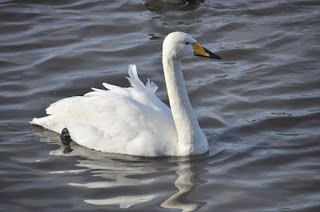Having checked the weather forecast (which was looking surprisingly good!), I decided to take a day off this week to visit the Wildfowl and Wetlands Trust (WWT) at Welney. The reserve is on the Ouse Washes, washlands which take up floodwater from the River Great Ouse and keep safe vast areas of farmland and settlements. The WWT manages about 3 of the 22 miles of the Washes, and the visitor centre and reserve are well worth exploring.
The Ouse Washes is an SSSI and a Ramsar site, and is a massively important area for wildfowl. The WWT staff gave a short talk about the reserve and the organisation (in the comfort of a very nice heated main hide), and according to this there are currently around 76,000 waterfowl present across the Washes. Amazing.
My main reason for visiting Welney - other than it having been on my list of places to visit for such a long time - was to see Whooper swans. These swans breed in Iceland and overwinter in the UK and Ireland, making the journey across the North Sea in one non-stop flight (nearly 1800 km to the Ouse Washes); counts here are generally up in the thousands. The swans feed in the surrounding fields during the day, and fly back onto the washland to roost and, at Welney, for a top-up of grain provided by the WWT, who also ring and monitor the birds. As well as the Whoopers there are Bewick's swans: smaller and shyer, and fewer in number.
Another must-see bird for me at Welney is the Black-tailed godwit - the species here is the focus of a project to increase their numbers. They were present, but the flocks were too far away for me to get a good view, other than the spectacle of them all in flight, put up by a passing marsh harrier.
I had great views of the Whooper swans on the lagoon in front of the main hide, and an absolute bonus for me was the huge number of Pochards that were there too - I have never seen so many all in one place! Most were males - the females fly further south and overwinter in France and Spain. This is yet another species in decline, and the WWT are undertaking research into this. For my part, I just loved watching, drawing and painting them - they are perfect little blocks of colour.
I could have spent all day drawing the wildfowl here - maybe I should have! Next time...











No comments:
Post a Comment